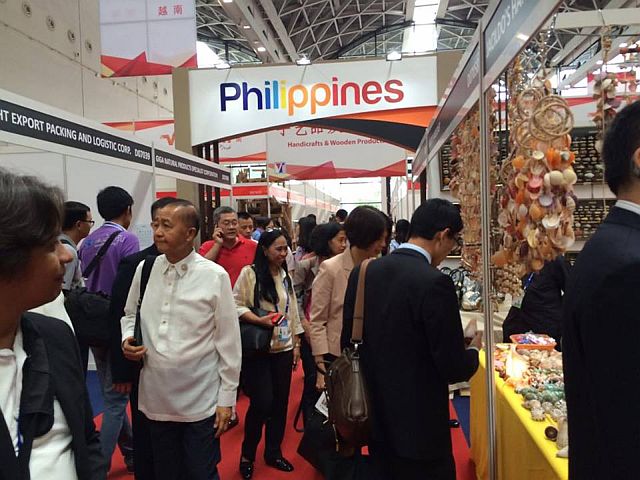
China Asean Expo (CAEXPO) visitors check out the Philippine trade delegation’s booth during last year’s CAEXPO at Nanning, Guangxi, China.
(Citem.com.ph)
While Chinese imports far exceed Philippine exports to China, a local business leader believed more should be done to take advantage of the size of the Chinese market.
Melanie Ng, Cebu Chamber of Commerce and Industry (CCCI) president, said local businesses should explore selling more to China.
“We are importing a lot from China. Without a doubt, our imports far exceeds our export to China. But China is a huge market,” she said in a text message.
One way of exploring the Chinese market is to participate in trade expos, which the chamber is considering at the moment.
Last Saturday, Jan. 14, CCCI had a meeting with the 14th China Asean Expo (CAEXPO) secretariat, Guangxi International Expositions Bureau director general Wang Lei.
During the meeting, the local chamber was invited to attend the CAEXPO happening in September this year in Nanning, China.
“CCCI is seriously considering organizing a delegation to attend this year’s CAEXPO,” said Ng.
Ng said the difference between CAEXPO and other expos in China was that the latter doubles as a trade and investment event.
The chamber president said delegates will have a chance to engage participants from other Asean states as well as market their products and services to China.
She added that the chamber is encouraging its members, particularly the exporters, to look at this opportunity to explore what unique product Cebu can offer to the Chinese market.
CCCI presently has a membership of more than 700, composed of big and small firms based in Cebu.
Trade missions
The business leader said CCCI also has several planned trade missions outside the country, including China and Indonesia, as well as a follow-up trip to Hiroshima in Japan, which the group visited toward the end of 2016.
“Years ago, we had several CCCI trips to China. I have an invitation to join an investment forum early (this) year,” she said in a previous interview.
PSA stats
Data from the Philippine Statistics Authority (PSA) showed that People’s Republic of China was the country’s second largest trading partner in 2015 with total trade worth $17.646 billion or 13.6 percent of the total trade.
Export receipts from China stood at $6.675 billion while import payments was valued at $11.471 billion, resulting in a trade deficit of $5.296 billion.
Export-wise, the biggest sales came from electronic products at $3.388 billion, followed by other mineral products with total receipts of $683.41 million.
Imported goods purchased from China consisted of electronic products worth $2.418 billion, followed by iron and steel with imports worth $1.823 billion.
CAEXPO
According to its website, the CAEXPO highlights China’s import and focus on opening the market to Asean, providing an effective bridge for Asean products to enter the market.
The CAEXPO, keeping close pace with the CAFTA Investment Agreement, aims to build a platform for Chinese enterprises to make overseas investment in Asean.
Exports from Asean, which is composed of 10 states, to China stood at $163 billion, which is three times more than its value in 2005.
China’s share in the overall Asean exports had reached 12.5 percent in 2014 and since 2011, has become the first destination market for Southeast Asian exports.
Asean member states include Brunei, Cambodia, Indonesia, Laos, Malaysia, Myanmar, Philippines, Singapore, Thailand and Vietnam.